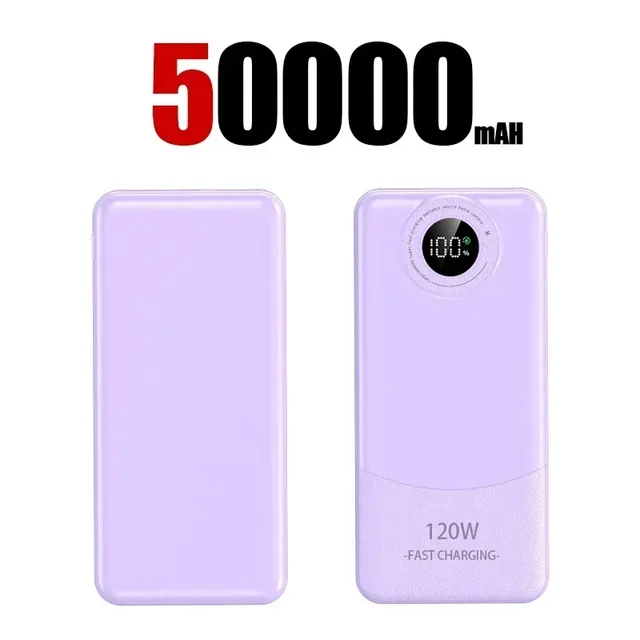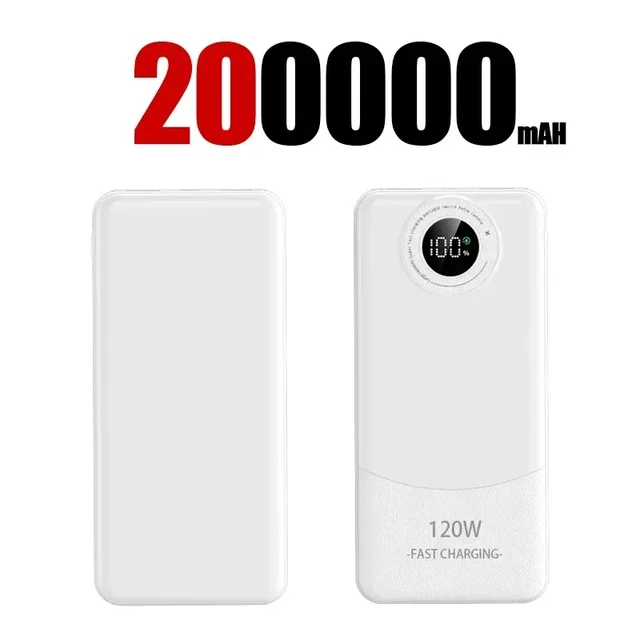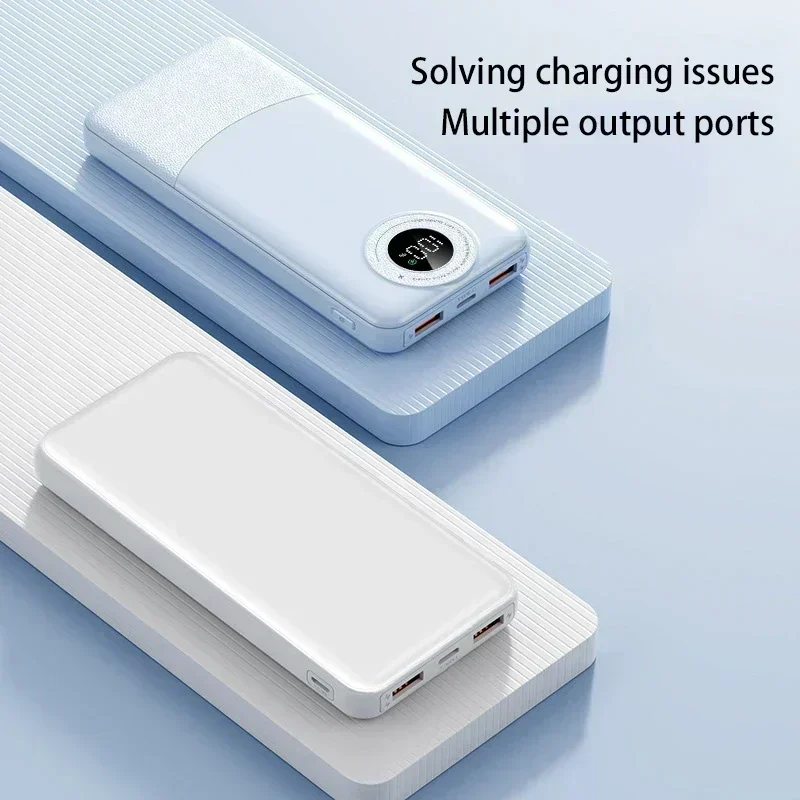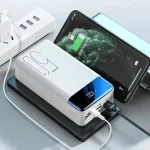Traveling by air often involves long hours of waiting, delays, and the inevitable draining of electronic devices’ batteries. In this digital age, power banks have become a traveler’s best friend, promising to keep smartphones, tablets, and other gadgets charged during flights. However, with airline regulations and security concerns, the question arises: are power banks truly flight-friendly companions? This comprehensive guide delves into the intricacies of traveling with power banks, unraveling the rules, restrictions, and best practices to ensure a smooth journey.
Understanding Airline Regulations
Before packing your trusty power bank, it’s crucial to familiarize yourself with airline guidelines. International and domestic carriers have varying regulations, but most adhere to similar principles set by international aviation bodies:
- Capacity Limits: Airlines typically permit power banks with a lithium-ion battery capacity of up to 100Wh (Watt-hours) in carry-on luggage. For reference, most standard portable chargers fall under this limit.
- Larger Capacity Restrictions: Power banks with capacities between 101Wh and 160Wh may be allowed with airline approval, but always check with your specific carrier first.
- No Checked Baggage: Due to fire risk, power banks are strictly prohibited in checked luggage. They must be carried in the cabin, where any potential issues can be quickly addressed.

Why the Restrictions Exist
The strict rules surrounding power banks stem from safety concerns, primarily related to the lithium-ion batteries they contain:
- Fire Hazard: Lithium-ion batteries can overheat and ignite under certain conditions, posing a significant risk in the cargo hold where fires cannot be immediately attended to.
- Pressure and Temperature Changes: The pressurized and temperature-controlled environment of an aircraft can exacerbate battery vulnerabilities, making it imperative to keep them close at hand.
Pre-Flight Preparation
To avoid last-minute hassles at security checkpoints, follow these preparation steps:
- Check with Your Airline: Prior to travel, visit your airline’s website or contact their customer service to confirm the most up-to-date power bank regulations.
- Labeling and Packaging: Clearly label your power bank with its specifications, especially its Wh rating. Ensure it’s packed in a way that’s easily accessible for inspection.
- Charge Your Devices: Fully charge your power bank and electronic devices before the flight to minimize the need for recharging en route.
Navigating airport security with a power bank requires mindfulness:
- Separate for Screening: Place your power bank in a separate tray for X-ray screening to facilitate a smoother and faster inspection process.
- Be Prepared to Demonstrate: Have the power bank’s specifications ready to show if requested. Occasionally, security personnel may ask to verify its compliance with airline rules.
In-Flight Usage Etiquette
While power banks are allowed on flights, using them comes with etiquette considerations:
- Mind the Seatmate: Be considerate of the passenger next to you. Charging noises or bright LED lights can be distracting during a flight.
- Limited Socket Access: If your flight offers USB charging ports, assess the situation before plugging in your power bank. Sharing outlets politely and avoiding overloading them is key.
Choosing the Right Power Bank for Travel
When selecting a power bank for air travel, consider these features:
- Size and Weight: Opt for a compact and lightweight model that easily fits in your carry-on bag and complies with airline regulations.
- Fast Charging Technology: Power banks with Quick Charge or USB-PD technology can rapidly charge your devices, ideal for shorter flights or layovers.
- Multiple Outputs: Having multiple USB ports allows you to charge multiple devices simultaneously, maximizing convenience.

Alternatives and Backup Plans
For extended flights or heavy users, supplementary charging options are worth considering:
- Portable Solar Chargers: While less practical for in-flight use, solar-powered chargers can be invaluable for outdoor trips before or after flying.
- Airplane Charging Ports: Many airlines now offer USB charging ports or AC outlets at seats, reducing the reliance on personal power banks.
- Carry a Spare Battery: For devices with replaceable batteries, carrying an extra battery pack can be a viable alternative.
International Travel Considerations
Traveling abroad introduces another layer of complexity:
- Voltage Compatibility: Ensure your power bank and charging cables are compatible with voltage standards in your destination country.
- Regional Regulations: Different countries may have unique regulations regarding power banks. Research ahead and be prepared to adapt.
Staying Updated with Regulations
Aviation regulations are subject to change, so staying informed is paramount:
- Official Sources: Regularly check the websites of the International Air Transport Association (IATA), Transportation Security Administration (TSA), and your airline for updates.
- Travel Alerts: Sign up for travel alerts from your airline or use travel apps that notify you of changes in regulations or restrictions.
Responsible Disposal and Recycling
Finally, when it’s time to retire your power bank, dispose of it responsibly:
- Recycling Programs: Many manufacturers and local authorities offer battery recycling programs to ensure safe disposal and minimize environmental impact.
- Avoid Trash Bins: Never discard a lithium-ion battery in regular trash or recycling bins, as they can pose a fire hazard.
Maximizing Power Bank Efficiency During Flights
To get the most out of your power bank while airborne, employ these strategies:
- Prioritize Charging: Determine which devices need charging the most and prioritize them. Typically, start with devices that have lower battery levels or are essential for communication upon landing.
- Energy Conservation: Switch your devices to low power mode or airplane mode to minimize energy consumption during charging. This not only charges devices faster but also prolongs the power bank’s usability.
- Monitor Charging Progress: Keep an eye on the power bank’s battery indicator to avoid over-discharging, which can harm the battery’s longevity. It’s wise to recharge the power bank when it reaches around 25% capacity if possible.
The Future of Air Travel and Power Banks
As technology advances, the integration of power solutions within air travel is likely to evolve:
- Built-In Charging Solutions: Airlines may increasingly incorporate advanced charging infrastructure within their planes, reducing the reliance on personal power banks.
- Wireless Charging Developments: With the growth of wireless charging technology, future aircraft might feature wireless charging pads embedded into seats, streamlining the charging experience.
- Smart Luggage Innovations: Luggage manufacturers are exploring ways to integrate charging capabilities into suitcases, complying with airline regulations while providing a convenient charging solution for travelers.
Eco-Friendly Power Banks for Sustainable Travel
Environmentally conscious travelers can choose from a growing range of eco-friendly power banks:
- Solar-Powered Options: While not ideal for in-flight use, solar-powered power banks can charge before departure or during outdoor activities, reducing carbon footprint.
- Recycled Materials: Some manufacturers are producing power banks using recycled plastics and sustainable materials, minimizing environmental impact.
- Longevity and Efficiency: Investing in power banks with high energy efficiency ratings and durable build quality reduces the need for frequent replacements, contributing to a more sustainable travel routine.
Power Banks and In-Flight Entertainment Systems
Though not directly interacting with in-flight entertainment systems, power banks play a supportive role:
- Backup for Personal Devices: When using your own device with the plane’s Wi-Fi or entertainment app, having a fully charged power bank ensures uninterrupted entertainment throughout the flight.
- Auxiliary Charging: On some flights, passengers may find USB ports near in-flight screens. A power bank can act as a buffer, charging during periods of inactivity and providing power when needed for personal devices.

The Importance of Quality and Certification
Given the safety implications, choosing a certified and high-quality power bank is imperative:
- Look for Certifications: Ensure your power bank bears recognized safety certifications like UL, CE, or FCC, which guarantee adherence to safety standards.
- Brand Reputation: Reputable brands invest in quality control and safety testing, reducing the likelihood of malfunctioning units that could pose risks during flights.
- Avoid Counterfeits: Fake or cloned power banks can be unsafe. Purchase from authorized retailers and verify product authenticity through manufacturer websites or serial numbers.
By embracing responsible practices and staying abreast of advancements, travelers can continue to rely on power banks as trusted travel companions, enhancing their journeys with the assurance of safety and convenience. As the skies evolve, so too will the technology that powers our travels, making each trip a little smoother and more connected.
Conclusion: Power Banks as Sky-High Companions
Power banks are undoubtedly valuable accessories for travelers seeking to stay connected and entertained during flights. By adhering to airline regulations, preparing in advance, and practicing good etiquette, passengers can enjoy the benefits of these portable powerhouses without hassle. As technology evolves and airlines adapt, staying informed and responsible remains key to ensuring that power banks remain sky-high energy companions we can rely on.

